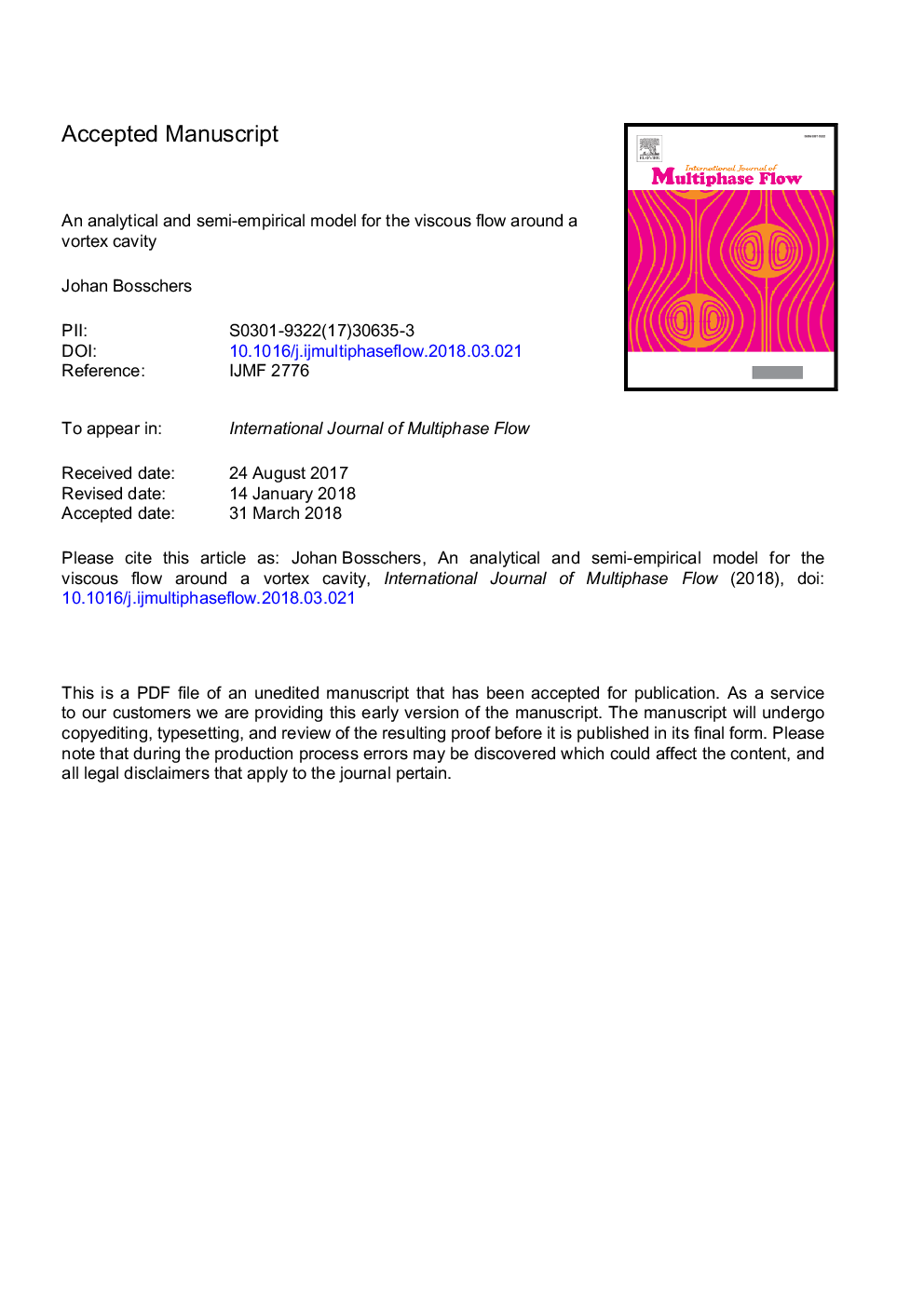| کد مقاله | کد نشریه | سال انتشار | مقاله انگلیسی | نسخه تمام متن |
|---|---|---|---|---|
| 7060075 | 1458473 | 2018 | 33 صفحه PDF | دانلود رایگان |
عنوان انگلیسی مقاله ISI
An analytical and semi-empirical model for the viscous flow around a vortex cavity
ترجمه فارسی عنوان
یک مدل تحلیلی و نیمه تجربی برای جریان چسبندگی اطراف حفره گرداب
دانلود مقاله + سفارش ترجمه
دانلود مقاله ISI انگلیسی
رایگان برای ایرانیان
کلمات کلیدی
کاویتاسیون، گرداب، ساختار جریان، مدل تحلیلی، مدل نیمه تجربی،
ترجمه چکیده
حداقل فشار در هسته یک گرداب، و در نتیجه همچنین ایجاد کاویتاسیون، به وضوح تحت تأثیر تاثیرات چسبنده قرار می گیرد. با این حال، اطلاعات کمی در مورد اثرات چسبناک در دسترس است پس از حفره گرداب به طور کامل توسعه یافته است. برای این منظور یک راه حل تحلیلی برای توزیع سرعت آسیموتال، از جمله شرایط مرزی، یک گرداب حفره ای در جریان دوزهای چسبنده استخراج و بررسی شده است. راه حل تحلیلی، که می تواند به عنوان یک گرداب لاغر-اوسن کاویتی تعریف شود، نشان می دهد که با افزایش اندازه حفره، تاثیر ویسکوزیته کاهش می یابد. برای کاربردهای عملی، مدل تحلیلی به یک مدل گرداب دوم توسعه داده شده است که اجازه می دهد تا یک منطقه با غلطک زدن. مدل نیمه تجربی حاصل از توزیع سرعت آسیموتال می تواند به داده های تجربی برای یک گرداب گردان بالایی برای هر دو شرایط غیر کاویتی و کاویتیو مناسب باشد. مدل گردابه نیز برای مقایسه رابطه بین اندازه حفره و کاویتاسیون با داده های تجربی استفاده شده است. برای مدل های نظری، این رابطه می تواند به گونه ای ارائه شود که مستقل از قدرت گرداب و اندازه هسته چسبنده باشد.
موضوعات مرتبط
مهندسی و علوم پایه
مهندسی شیمی
جریان سیال و فرایندهای انتقال
چکیده انگلیسی
The minimum pressure in the core of a vortex, and therefore also the inception of cavitation, is considerably influenced by viscous effects. However, little information is available on the influence of viscous effects once the vortex cavity is fully developed. For that purpose an analytical solution for the azimuthal velocity distribution, including the boundary conditions, of a cavitating vortex in 2-D viscous flow is derived and investigated. The analytical solution, that can be designated as a cavitating Lamb-Oseen vortex, shows that with increasing cavity size the influence of viscosity decreases. For practical applications, the analytical model is extended to a second vortex model which allows for a region with vorticity roll-up. The resulting semi-empirical model for the azimuthal velocity distribution can be fitted well to experimental data for a wing-tip vortex for both non-cavitating and cavitating conditions. The vortex model has also been used to compare the relation between cavity size and cavitation number with experimental data. For the theoretical models, this relation can be presented such that it becomes independent of vortex strength and viscous core size.
ناشر
Database: Elsevier - ScienceDirect (ساینس دایرکت)
Journal: International Journal of Multiphase Flow - Volume 105, August 2018, Pages 122-133
Journal: International Journal of Multiphase Flow - Volume 105, August 2018, Pages 122-133
نویسندگان
Johan Bosschers,
